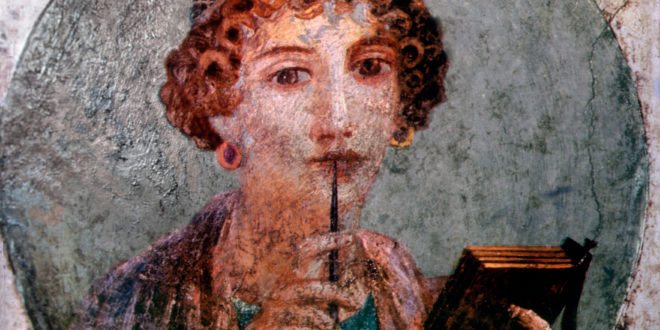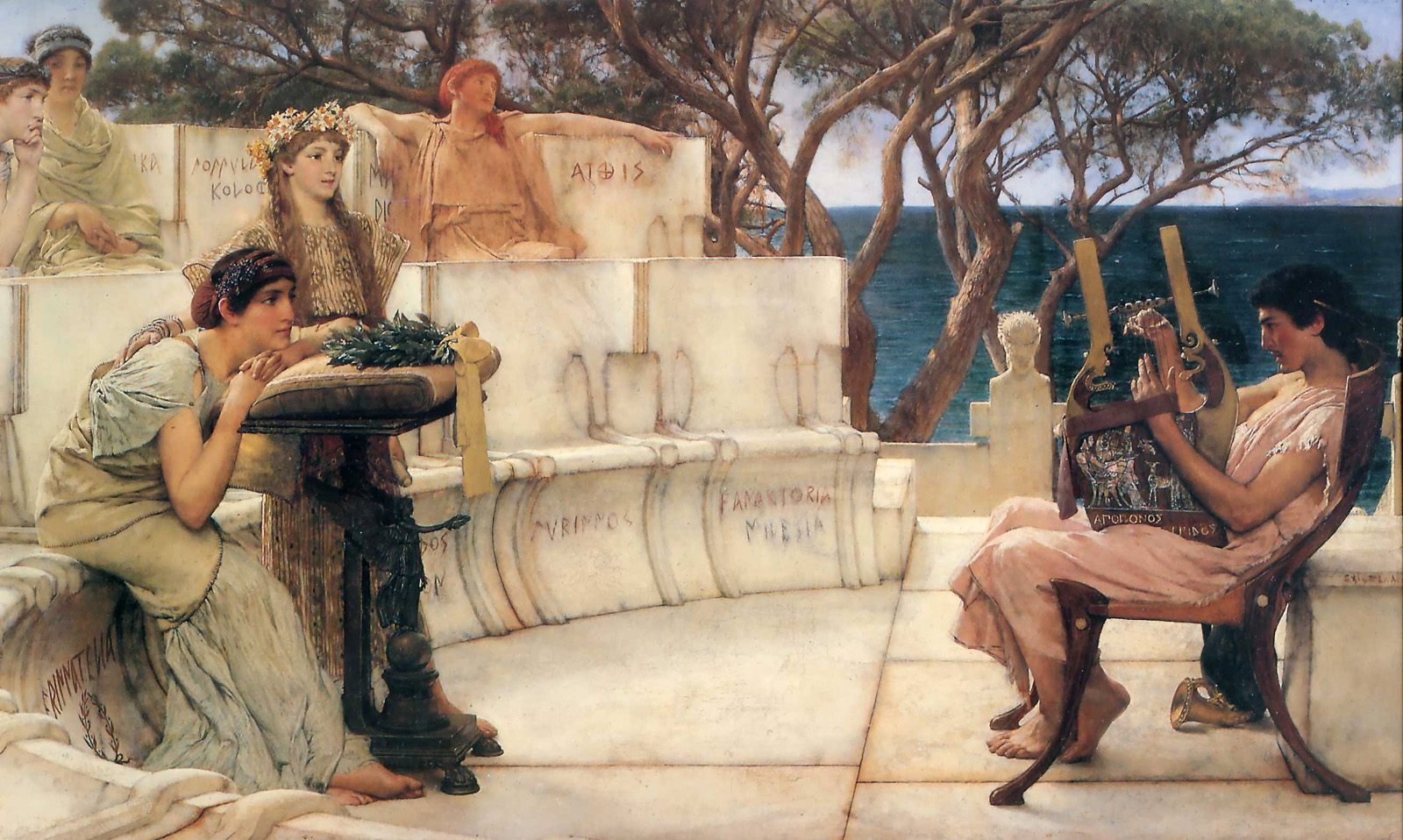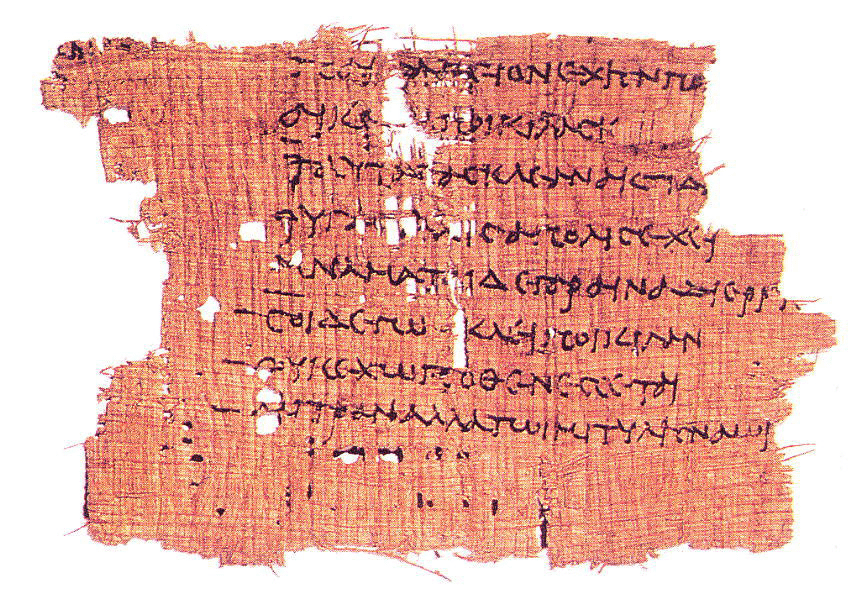Believe me, in the future someone
Will remember us... (Sappho, fragment 147)
History has two sides. One side is always visible, you can read a lot of books about it, it gets into the school curriculum and most of the time inspires talented artists - hence we can learn about the past from various artworks. Yet, many times what's really interesting remains hidden from us. Why? Either because there is simply little information left of it, or because it is a taboo topic. In case of Sappho, both things happened.
There is no doubt that the affinity of the same sex is included in the ancient sources, but there is a lot less number of chapters where women are attracted to each other (with positive or negative overtones). Of course you can find them. An example of a negative representation is this epigram about two women from Samos:
"They are unwilling to play Aphrodite's games according to her rules, but they escape to other things that are not appropriate."
Presumably, Aphrodite, goddess of love, helps plenty of heterosexual lovers, while homosexual attraction wasn’t really approved by the Greek society. However, another source is a good example for acceptance: according to Plutarchus the biographer, in Sparta "fair women" could also fall in love with girls.
Specific people are rarely mentioned. One of them was Sappho, of whom we have the most information nowadays.
Sappho, an outstanding lyricist of ancient Greek poetry was born on the island of Lesbos in the 7th century B.C. She laid the foundations of lesbian poetry, taught a lot of women, and she was already a huge talent in the eyes of her contemporaries. She legitimized same-sex attraction for the past, present and future and moreover, that it can be expressed at an outstanding artistic level.

While Sappho is considered to be the first famous lesbian poet, ancient historians believe that in her young age she might have gotten married to a nobleman from the island of Andaros. Her alleged husband, according to several scientists, did not exist, which they proved by – among others – the fact that his name means "penis". Nevertheless, we can read more about Sappho’s daughter, called Kleis, who of course does not prove the unquestionable existence of the husband. Here's a part of a poem about the little girl:
"I have a beautiful daughter
Like a golden flower
My beloved Kleis.
I would not trade her for all Lydia nor lovely..."
Atthis, lover of Sappho and the beautiful poems
The island of Lesbos undoubtedly flourished at the time of Sappho’s life. "He is outstanding like a Lesbian singer" writes Sappho in her 106th fragment. In fact, ancient sources also commemorate the generations following Sappho, as we can read in the Iliad:
"I will give him seven excellent workwomen, Lesbians, whom I chose for myself when he took Lesbos- all of surpassing beauty."
(Iliad, Book 9)
It’s interesting and unique that in contrast to the male-centered society of Ancient Greece a significant women intellectuals emerged in Lesbos. Sappho became a recognized poet in her own time: money was issued with her image, her statue was raised, but still, the most remembered aspect of her life is her love poetry. A much-quoted poem of hers is about love, too. You can listen to Sweet Mother here:
One of her most complete poem is fragment 94, addressed to Atthis. The lady appears in several poems that reveal their romantic relationship with each other. Atthis got married to a man at the end of her studies, thus was forced to leave the poet group. In the verse, the Lyric I commemorates the time spent with her love, sharing her bed and festive dances.
“I'm not pretending; I wish I were dead.”
She was leaving me in tears,
and over and over she said to me:
“Sappho, it hurts; what's happened to us is just so grim;
it isn't my choice, I swear it, to leave like this.”
and with quantities of ... flowery perfume ... fit for a queen even, you anointed yourself all over,
and on soft beds ... delicate ... you have satisfied desire ...”

Fragments and two new poems from 2013
Only part of the over 500 fragments by Sappho remained as contiguous texts. Unfortunately in some cases only a couple of words were found. Nevertheless, more and more poems get discovered, the latest one was found in January 2013. The papyrus fragments, presented by Dirk Obbink (Lecturer at Oxford University) are literary sensations.
The two fragments were published in Hungarian, too, in Orpheus Noster magazine in 2014. Here is a love-related part from one of them:
Kypris
"How can someone not be hurt and hurt again,
Kypris, Queen, whomsoever one really loves,
and not especially want respite from suffering?
What sort of thoughts do you have
to pierce me idly with shiverings
out of desire that loosens the knees ..."

Besides her fragment to Kypris, her poem written to her oldest brother counts as the latest translated Sappho poem. Because of the constant archaeological excavations, it is yet unknown what other poems will come to light.

